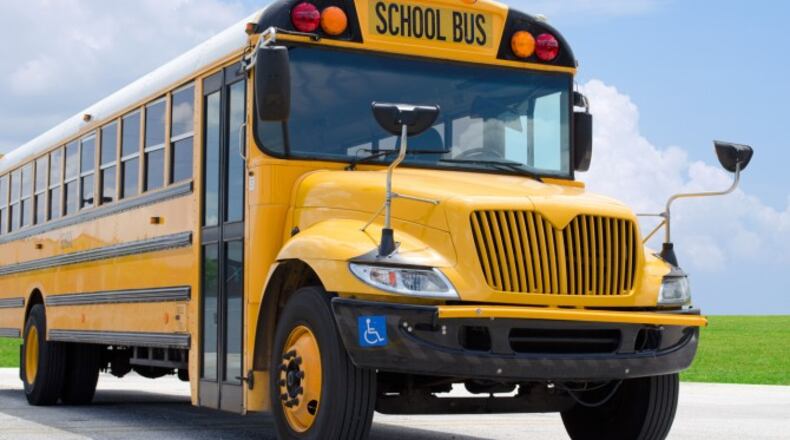Mike DeWine, Republican: Ensure every school has access to a mental health professional. Implement age-appropriate drug prevention. Modernize classrooms with technology and vocational training.
Constance Gadell-Newton, Green Party: Allow schools to turn down money for school resources officers and provide alternative programming to break the school to prison pipeline. Address environmental factors such as lack of proper nutrition and exposure to lead.
Travis Irvine, Libertarian: Cut spending from other parts of Ohio’s state educations system and direct that funding toward helping disadvantaged students. Relieve economic pressure on low-income families by addressing the state’s economy and drug crisis.
Candidate platforms on school funding:
Cordray: Address Ohio’s school funding formula, which he calls unconstitutional.
DeWine: Create a more equitable funding system that directs state resources toward support services for children in need.
Gadell-Newton: Reform Ohio’s property-tax based school funding formula.
Irvine: Says school funding shouldn’t be based just on property taxes.
***
Both Democrat Rich Cordray and Republican Mike DeWine say they will help lower-income districts overcome achievement gaps in elected Ohio governor.
Cordray’s plan talks about neighborhood schools — schools that serve the surrounding community with health and support services – and increasing educator pay. DeWine focuses on state-funded support services, bringing more technology into classrooms and expanding vocational training.
Asked how they plan to pay for these initiatives, Cordray campaign spokesman Mike Gwin said steering money away from failing charter schools and reducing unfunded state mandates would free up money.
RELATED: Where Ohio governor candidates agree, differ on education
“Rich will also work with the legislature in his first budget to address the unconstitutional funding of public education in Ohio, and to ensure an equitable distribution of tax money so that every school, teacher, and student has the resources they need to succeed,” he said.
Josh Eck, a spokesman for DeWine, said specific commitments can’t be made until the revenue projections for next year are known, but he added: “Mike DeWine’s commitment is that properly funding education in Ohio will be one of his top priorities as Governor. Mike DeWine believes that every kid deserves a chance at success, and education is one of the best ways we can give them that shot.”
School funding is an issue that has stymied state leaders for decades. The Supreme Court of Ohio ruled 20 years ago that Ohio’s system for funding education was unconstitutional because of an over-reliance on property taxes.
RELATED: DeWine, Cordray final debate focuses on abortion, education and opioid crisis
The Ohio Education Policy Institute, a research group that advocates for school districts, released a report this summer that said the situation hasn’t improved much.
Ohio’s poorest districts had a 29.4 percent increase in state and local revenues in the years since the decision, while the wealthiest districts saw a 25.6 percent increase, according to the report. This leaves the state’s wealthiest districts, on average, with still more money per student than the state’s poorest.
“If we could put the funding issue in the rear-view mirror and we could focus on the policy, that would be a big deal,” said Howard Fleeter, the report’s author.
The Path Forward: The region must rally to fix the Dayton Public Schools
Fleeter released another report this month that shows a strong correlation between poverty and student performance on state test scores.
“The reason to fix the formula is so that every kid gets an opportunity to learn,” he said. “We will know we’ve don’t that when we’ve successfully closed the achievement gap.”
Greg Lawson, policy director at the conservative Buckeye Institute, said the most fundamental difference between Cordray and DeWine is how they view school funding. Lawson favors more local control, saying pumping massive amounts of state tax dollars into poor school districts has yet to move the needle.
FOLLOW JOSH SWEIGART ON TWITTER
“The way the school funding formula works, you’re going to have a pretty big tax increase in order to fund every school district equally through the state,” he said. “That’s just a fact. There’s no way to do it equally any other way.”
But left-leaning Innovation Ohio’s Stephen Dyer favors a statewide funding system that doesn’t rely as much on local property taxes. The current system, he said, breeds inequity because higher-wealth districts can collect more levy money than poorer districts.
“Voters will have a very clear decision for this,” Dyer said. “Do they like having to go to the ballot all the time for levies, or do they not?”
In the current fiscal year, the poorest districts received about 30 percent of their non-federal funding from local taxes, while rich districts received about 82 percent, according to the Ohio Education Policy Institute. The state average is about 56 percent.
About the Author


